
Edgar Rice Burroughs was an American speculative fiction writer, best known for his prolific output in the adventure, science fiction and fantasy genres. His most well-known creations include Tarzan of the Apes, John Carter of Mars and Carson Napier of Venus.
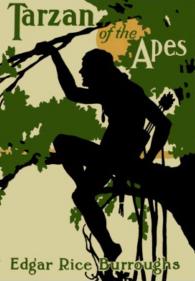
Tarzan of the Apes is a 1912 novel by American writer Edgar Rice Burroughs, the first in a series of twenty-four books about the title character Tarzan. It was first published in the pulp magazine The All-Story in October 1912 before being released as a book in 1914.
Opar is a fictional lost city in the Tarzan novels of Edgar Rice Burroughs and later the Khokarsa novels of Philip José Farmer and Christopher Paul Carey and various derivative works in other media. The city first appeared in the second Tarzan novel, The Return of Tarzan (1913).
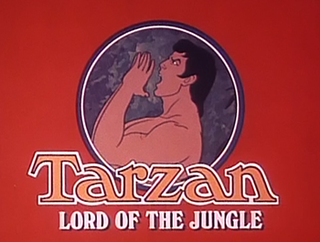
Tarzan, Lord of the Jungle is an animated series created by the Filmation studio for Saturday mornings on CBS, starting in 1976. This was the first animated series about the jungle hero. There are a total of 36 episodes produced over the first four seasons.

Sabor is a generic name for African lionesses in Mangani, the fictional language of the great apes in the Tarzan novels of Edgar Rice Burroughs. In Burroughs' works several lionesses appear under the designation Sabor. In the Disney animated movie Tarzan, Sabor is a term for leopards, more specifically the leopard that kills Tarzan's parents.
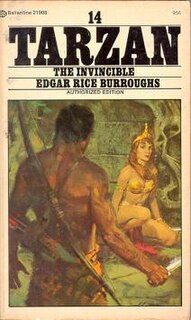
La is a character in Edgar Rice Burroughs's series of Tarzan novels, the queen and high priestess of Opar, a lost city located deep in the jungles of Africa. Opar is portrayed as a surviving colony of ancient Atlantis in which incredible riches have been stockpiled down through the ages. The city's population exhibits extreme sexual dimorphism caused by a combination of excessive inbreeding, cross-breeding with apes, and selective culling of offspring. Consequently, female Oparians are physically perfect, while male Oparians are hideous bestial creatures.

Tarzan the Untamed is a book by American writer Edgar Rice Burroughs, the seventh in his series of twenty-four books about the title character Tarzan. It was originally published as two separate stories serialized in different pulp magazines; "Tarzan the Untamed" in Redbook from March to August, 1919, and "Tarzan and the Valley of Luna" in All-Story Weekly from March to April 1920. The two stories were combined under the title of the first in the first book edition, published in 1920 by A. C. McClurg. In order of writing, the book follows Jungle Tales of Tarzan, a collection of short stories about the ape-man's youth. Chronologically, it follows Tarzan and the Jewels of Opar.
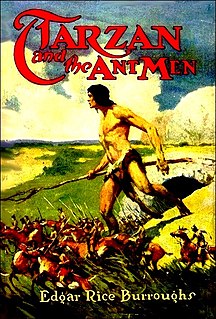
Tarzan and the Ant Men is a novel by American writer Edgar Rice Burroughs, the tenth in his series of twenty-four books about the jungle hero Tarzan. It was first published as a seven-part serial in the magazine Argosy All-Story Weekly for February 2, 9, 16 and 23 and March 1, 8 and 15, 1924. It was first published in book form in hardcover by A. C. McClurg in September 1924. The story was also adapted for Gold Key Comics in Tarzan #174-175 (1968).

Jungle Tales of Tarzan is a collection of twelve loosely connected short stories by American writer Edgar Rice Burroughs, comprising the sixth book in order of publication in his series of twenty-four books about the title character Tarzan. Chronologically the events recounted in it occur within Chapter 11 of the first Tarzan novel, Tarzan of the Apes, between Tarzan's avenging of his ape foster mother's death and his becoming leader of his ape tribe. The stories ran monthly in Blue Book magazine, September 1916 through August 1917 before book publication in 1919.

Tarzan and the Golden Lion is an adventure novel by American writer Edgar Rice Burroughs, the ninth in his series of twenty-four books about the title character Tarzan. It was first published as a seven part serial in Argosy All-Story Weekly beginning in December 1922; and then as a complete novel by A.C. McClurg & Co. on March 24, 1923.

Tarzan, Lord of the Jungle is a novel by American writer Edgar Rice Burroughs, generally considered the eleventh in his series of twenty-four books about the title character Tarzan. It was first published as a serial in Blue Book Magazine from December 1927 through May 1928; it first appeared in book form in a hardcover edition from A. C. McClurg in September 1928.
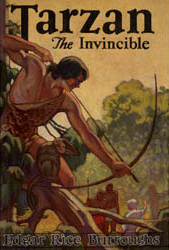
Tarzan the Invincible is a novel by American writer Edgar Rice Burroughs, the fourteenth in his series of twenty-four books about the title character Tarzan. The novel was originally serialized in the magazine Blue Book from October, 1930 through April, 1931 as Tarzan, Guard of the Jungle.

Tarzan and the City of Gold is a novel by American writer Edgar Rice Burroughs, the sixteenth in his series of twenty-four books about the title character Tarzan. The novel was originally serialized in the magazine Argosy from March through April 1932.

Tarzan and the Lion Man is a novel by American writer Edgar Rice Burroughs, the seventeenth in his series of twenty-four books about the title character Tarzan. The novel was originally serialized in the magazine Liberty from November 1933 through January 1934.

Tarzan and the Castaways is a collection of three stories by American writer Edgar Rice Burroughs, the last in his series of twenty-four books about the jungle hero Tarzan. The title novella, and the two short stories were first published in pulp magazines in 1940 and 1941. The combined book was published first as a hardcover by Canaveral Press in early 1965, and as a paperback by Ballantine Books in July 1965.

Tarzan: The Lost Adventure is a novel credited to Edgar Rice Burroughs and American writer Joe R. Lansdale, based on an incomplete fragment of a Tarzan novel, written by Burroughs, which had been left unfinished at his death. The book was serialized in four parts by Dark Horse Comics, before being published as a single volume in 1995.

Tarzan and the Tarzan Twins is a collection of two Tarzan novellas by American writer Edgar Rice Burroughs, for younger readers. It was originally published as two children's books, The Tarzan Twins by Voland in October 1927, and Tarzan and the Tarzan Twins, with Jad-bal-ja, the Golden Lion, by Whitman in March 1936. These were brought together in November 1963 under the title of Tarzan and the Tarzan Twins in the first complete edition.

Nkima is a fictional character in Edgar Rice Burroughs' Tarzan novels, and in adaptations of the saga to other media, particularly comics. His name comes from either the word N'kima, or, after the Meru language nickname for Ugali, a dish popular in Kenya and Tanzania made from maize flour.
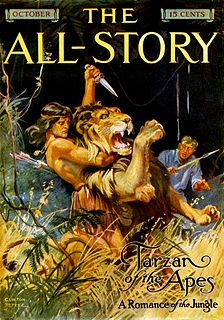
Tarzan is a fictional character, an archetypal feral child raised in the African jungle by the Mangani great apes; he later experiences civilization, only to reject it and return to the wild as a heroic adventurer. The character has been variously depicted as articulate and sophisticated as in the original novels, and as a noble savage with limited language skills such as in the films featuring Johnny Weissmuller.

Tarzan is a series of 24 adventure novels written by Edgar Rice Burroughs (1875–1950) and published between 1912 and 1966, followed by several novels either co-written by Burroughs, or officially authorized by his estate. There are also two works written by Burroughs especially for children that are not considered part of the main series.


















